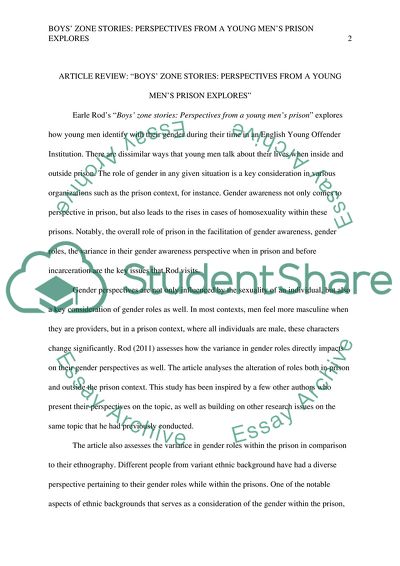Cite this document
(“Review on Earle, R.(2011) ' Boys' zone stories: Perspectives from a Research Paper”, n.d.)
Review on Earle, R.(2011) ' Boys' zone stories: Perspectives from a Research Paper. Retrieved from https://studentshare.org/gender-sexual-studies/1823175-review-on-earle-r2011-boys-zone-stories-perspectives-from-a-young-mens-prison-criminology-and-criminal-justice-112-129-143
Review on Earle, R.(2011) ' Boys' zone stories: Perspectives from a Research Paper. Retrieved from https://studentshare.org/gender-sexual-studies/1823175-review-on-earle-r2011-boys-zone-stories-perspectives-from-a-young-mens-prison-criminology-and-criminal-justice-112-129-143
(Review on Earle, R.(2011) ' Boys' Zone Stories: Perspectives from a Research Paper)
Review on Earle, R.(2011) ' Boys' Zone Stories: Perspectives from a Research Paper. https://studentshare.org/gender-sexual-studies/1823175-review-on-earle-r2011-boys-zone-stories-perspectives-from-a-young-mens-prison-criminology-and-criminal-justice-112-129-143.
Review on Earle, R.(2011) ' Boys' Zone Stories: Perspectives from a Research Paper. https://studentshare.org/gender-sexual-studies/1823175-review-on-earle-r2011-boys-zone-stories-perspectives-from-a-young-mens-prison-criminology-and-criminal-justice-112-129-143.
“Review on Earle, R.(2011) ' Boys' Zone Stories: Perspectives from a Research Paper”, n.d. https://studentshare.org/gender-sexual-studies/1823175-review-on-earle-r2011-boys-zone-stories-perspectives-from-a-young-mens-prison-criminology-and-criminal-justice-112-129-143.


